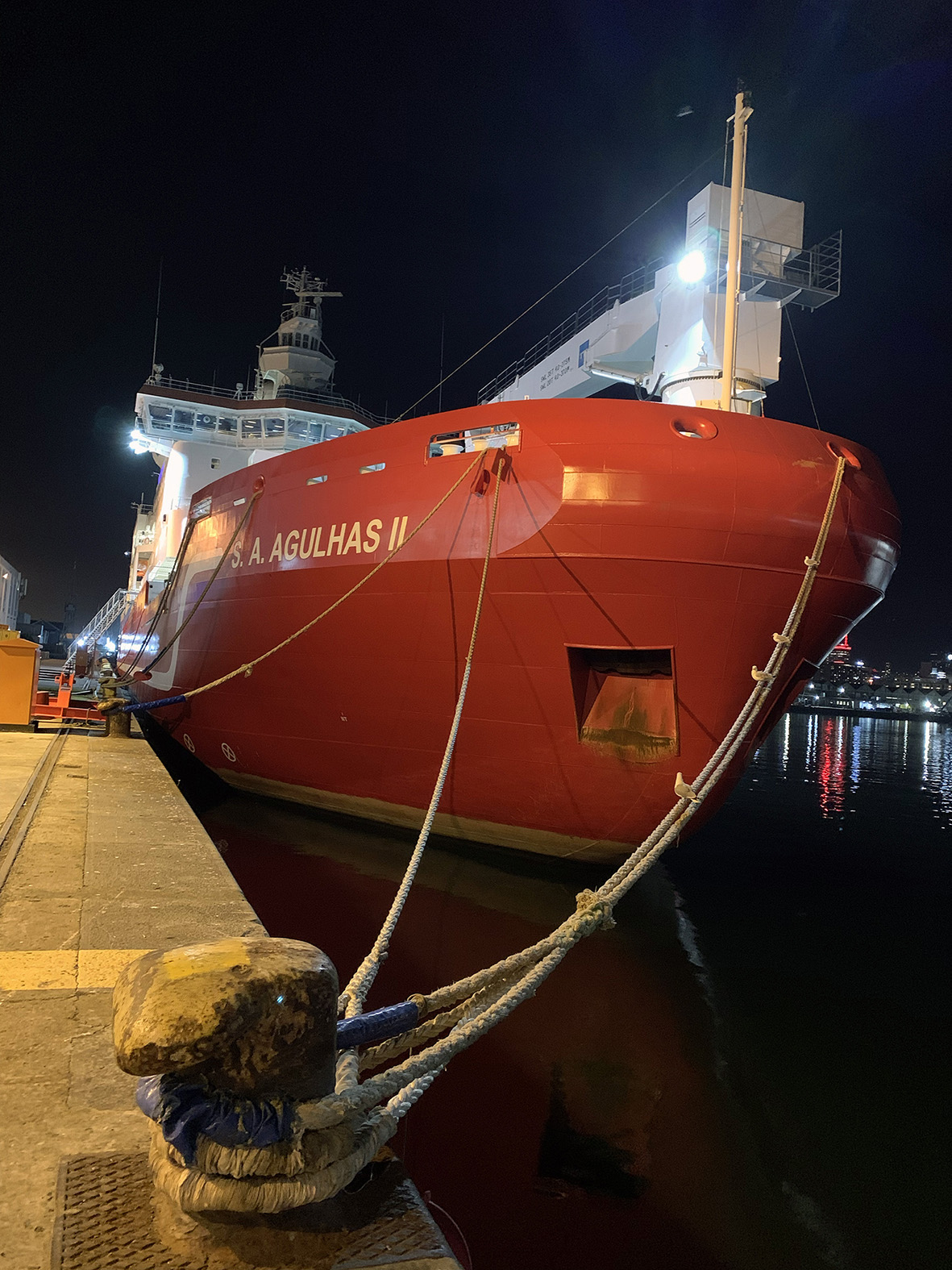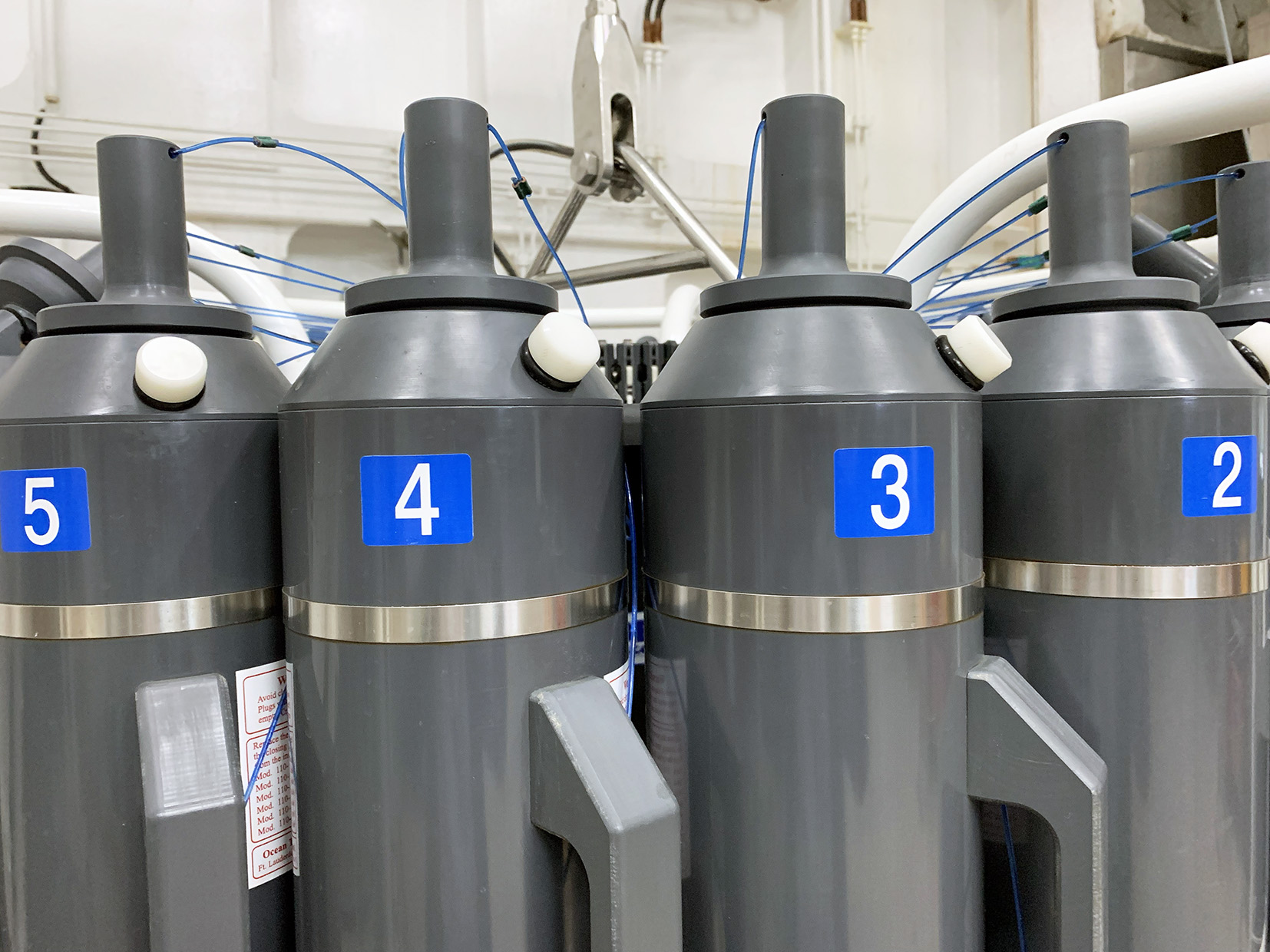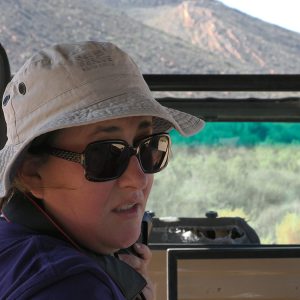A fresh start
Céline Dimier, a biology engineer from Villefranche-sur-Mer, gives us her first impressions on leaving Cape Town.
A new mission, a new start… and a new oceanographic adventure for this veteran of long-distance scientific missions and expeditions.
Discovering the S.A. Agulahs II
Go outside, as far beyond the walls as possible, to be enriched from within.
That’s what gives meaning to existence.
Perhaps this phrase gleaned from a book was important to me.
I’m not sure.
In any case, I’ve often had it in my head, and it’s helped me to get out of my comfort zone… a big word these days.
The plane is about to land.
Between the clouds we can make out Table Mountain, the impressive plateau that dominates Cape Town from its height of 1086 metres.
The landing goes off without a hitch.
We get off the plane, complete immigration formalities and head for the hotel for a well-deserved night’s sleep.
The next day, I join the Monaco Explorations team on the boat.
Heading for the Water Front, east quay.
The Agulhas is docked.
With her bright red hull, she’s impossible to miss.
This South African research vessel is enormous: 134 m long, 7.65 m high, 8 decks.
It can accommodate around a hundred people.
I’m at the foot of the gangway; that’s it, I’m boarding.
At first glance, it’s a real labyrinth.
It will take some time not to get lost in the meandering corridors.
The tour begins on Deck 3, where the various laboratories are located.


It’s spacious.
The rosette, an indispensable tool for analyzing seawater, is here too, ready to plunge into the ocean depths.
I can already see myself at sea, the equipment installed, with filtration ramps, measuring devices, bottles, filters… And everyone crowding around the Niskin bottles to collect the seawater and carry out their analyses.
On the upper floors are the auditorium, work rooms, laundry and gym.
Everything you need to spend weeks on board without missing a thing.
On deck 5 is the hangar where up to 2 helicopters can be stored.
For this campaign, it will be used to store the thirty or so profiling floats that we have to drop into the sea and which will take measurements of the water column for several years.
The data will be transmitted regularly by satellite to the laboratory.
On the sundeck, the ROV waits to be deployed at sea.
It will be tested the day after we leave Cape Town.
Finally, I’m assigned my cabin.
I’m lucky, I’ve got a cabin all to myself, on deck 7.
It’s got a banquette, a desk, a bathroom and even a sofa: it’ll be my haven of peace for the next 2 months of my mission.
I don’t dwell on it, as the safety briefing by the first mate is about to begin.
The survival suit, the life jacket, the raft to evacuate the ship, everything is reviewed.
But don’t worry, everything’s going to be fine.
Boarding for adventure
As night falls, it’s time to step ashore one last time before departure to enjoy the hustle and bustle of the Water Front.
A last swim in the crowd, a last photo of the sea lions sleeping on the pontoons.
Tomorrow, we cast off for the Indian Ocean!
Photo gallery
A Cape sea lion rests on one of the pontoons along the waterfront.
Cape Town_30_09_2022©Didier Théron_Monaco
S.A. Agulhas II_Helicopter deck and hangar©Céline Dimier
Safety exercise aboard the S.A. Agulhas II.
Survival suit.
04_10_2022©D.Théron_MonacoExplorations
Cape fur seal, Arctocephalus pusillus©DidierThéron_MonacoExplorations
The waterfront.
Cape Town.
South Africa.
01_10_2022©Didier Théron_Monaco Explorations

Céline Dimier
This marine biology engineer has been working for the CNRS in Villefranche-sur-Mer since 2014.
She is in charge of managing the SAPIGH (Service d’analyse de pigments par HPLC: chromatographie en phase liquide haute pression) analysis platform.
On this mission, she is part of Hervé Claustre’s team, in charge of the BGC Argo project.
October 23 to 31, 2019
